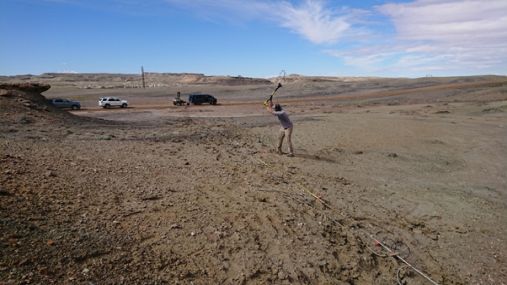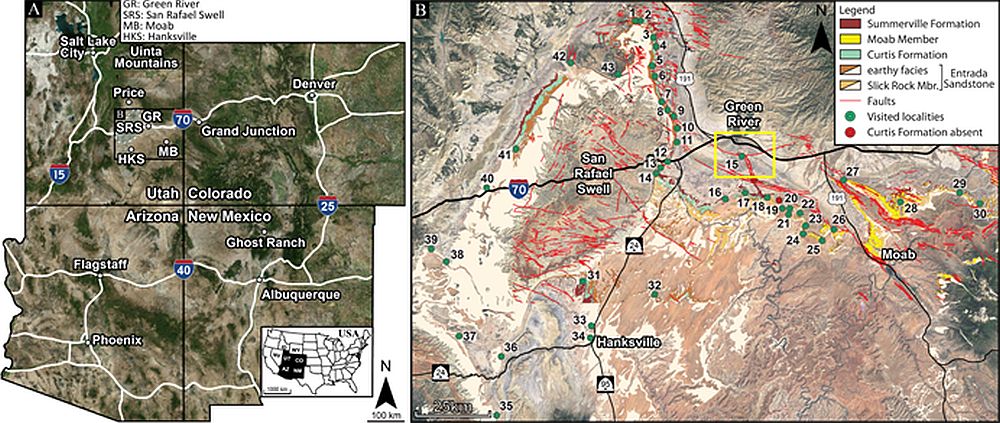About the project
The impacts of Carbon Capture and Storage (CCS) on mitigating climate change appears more and more crucial (Bui et al., 2018), and Norway has become, over the past decade, one of the leading nations with respect to subsurface CO2 storage, due in part to its high-level competence in characterization of sub-surface reservoirs.
Reservoirs in the North Sea are matured for CO2 storage; however, key questions around plume migration mechanisms and pressure linked to site integrity have been raised for both the Sleiper and Snøhvit cases, as well as for the Longyearbyen CO2 lab and Svelvik pilots. Many examples of fluid escape have been documented in the offshore subsurface environment (e.g. seismic chimneys), and active or relict natural seeps on land offer informative analogues to subsurface fluid migration.
Of note are the natural seeps in east-central Utah, USA (Fig. 1) that are easily accessible and represent suitable onshore counterparts to the offshore fluid escape features, with a specific focus on the Little Grand Wash Fault by Crystal Geyser (Fig. 2), a few kilometres south of Green River. Analysis of these seeps will improve our understanding of geological and geomechanical factors controlling subsurface CO2 containment and the expression of fluid escape in geophysical images.

Objectives
The multidisciplinary COTEC-project will address the challenge by collecting surface and subsurface datasets at mesoscopic scales that, through upscaling, will be implemented in seismic investigations and reservoir-seal models (Fig. 3).

The project builds upon previous studies (COPASS project; Skurtveit et al., 2017; Sundal, 2017; Midtkandal et al 2018; Zuchuat et al. 2018; 2019a; 2019b) but is also relevant for analogous settings such as the Norwegian Continental Shelf (e.g. e.g. Aurora and Smeaheia CO2 storage prospects, offshore Norway).
Overall, this next research phase specifically focuses on the detailed, post-depositional history of the Jurassic interval in east-central Utah, addressing one fundamental question: what are the thresholds for detecting CO2 seeps in the subsurface? This encompasses more targeted questions:
- What does the fault core and the fault damage zone of the leaking Little Grand Wash Fault consist of?
- What is the detailed geological footprint of CO2 flow along strata, faults, and fractures?
- How did the CO2 flow migrate through a heterogeneous and transitional, faulted reservoir-seal complex?
- Can seepage from the storage compartments and fluid saturation be identified by seismic imaging?
Financing
The COTEC-project was granted financing from the Norwegian Research Council in the CLIMIT-porgramme. This project is also linked to other ongoing research activity in Norway and the USA, and there is a close association toward other Norwegian and US-based federal and private funds. The NFR grant/project number is 295061.
The project timeframe is from from May 2019, with 4 years duration, ending in 2023.
Cooperation
- Department of Geosciences, University of Oslo, Norway
- Norwegian Geotechnical Institute, NGI, Norway
- Norwegian Seismic Array – NORSAR, Norway
- The University Centre in Svalbard – UNIS, Norway
- Natural Environmental Sciences Department, Western State Colorado University, USA
- Department of Geosciences, Boise State University, USA
- Department of Civil and Environmental Engineering and Department of Geophysics, Colorado School of Mines, USA
